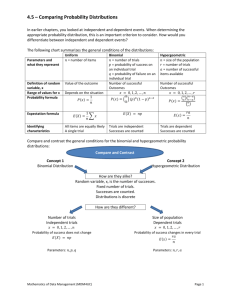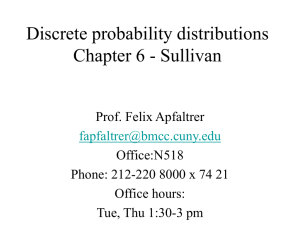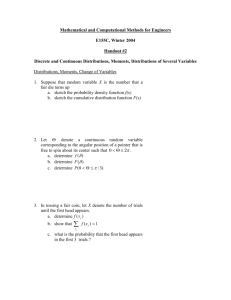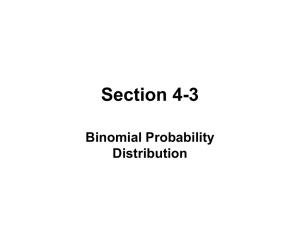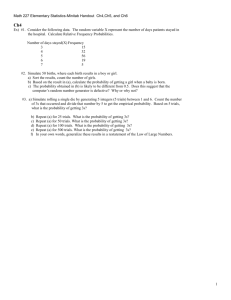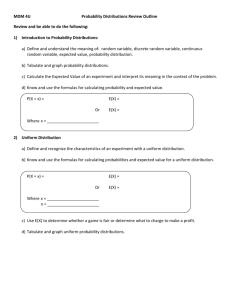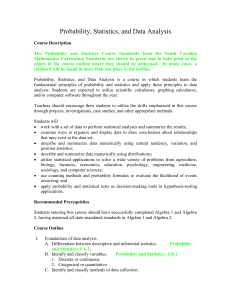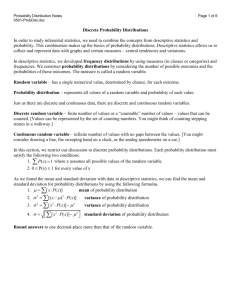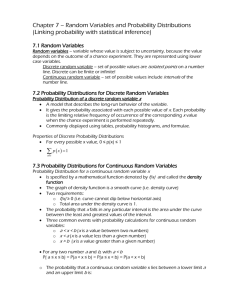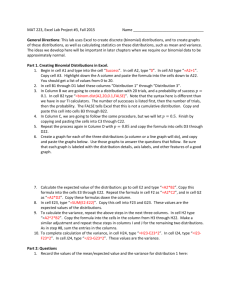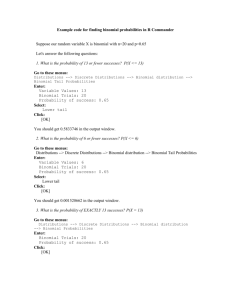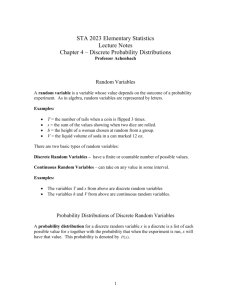triola 5e ch5 notes
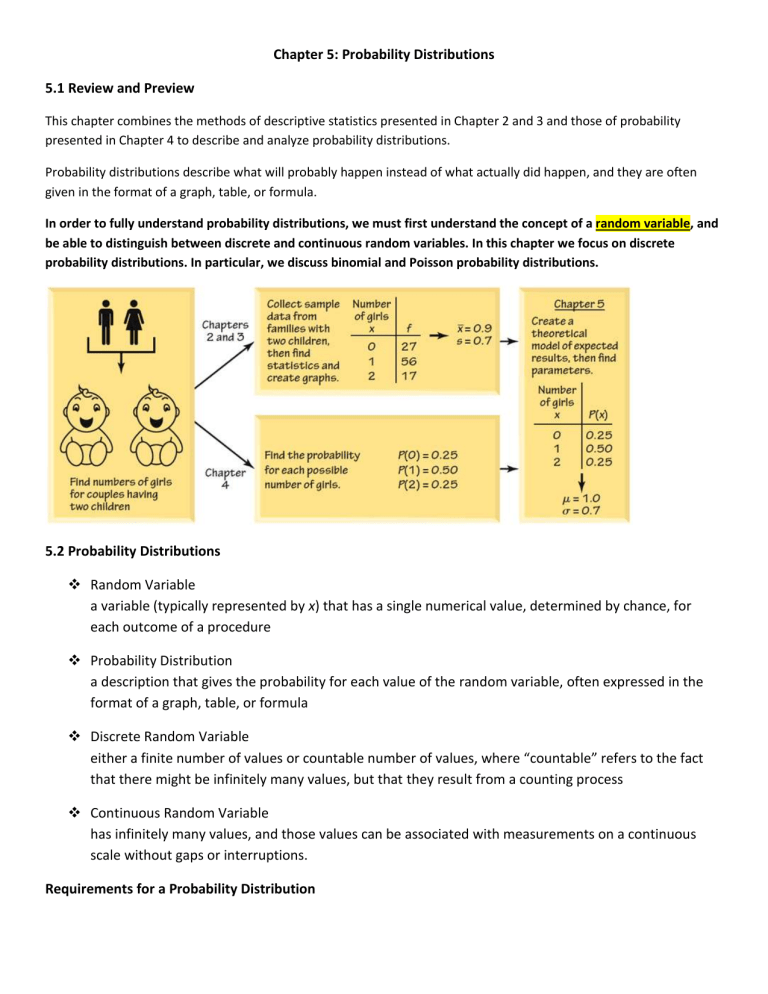
Chapter 5: Probability Distributions
5.1 Review and Preview
This chapter combines the methods of descriptive statistics presented in Chapter 2 and 3 and those of probability presented in Chapter 4 to describe and analyze probability distributions.
Probability distributions describe what will probably happen instead of what actually did happen, and they are often given in the format of a graph, table, or formula.
In order to fully understand probability distributions, we must first understand the concept of a random variable, and be able to distinguish between discrete and continuous random variables. In this chapter we focus on discrete probability distributions. In particular, we discuss binomial and Poisson probability distributions.
5.2 Probability Distributions
Random Variable a variable (typically represented by x) that has a single numerical value, determined by chance, for each outcome of a procedure
Probability Distribution a description that gives the probability for each value of the random variable, often expressed in the format of a graph, table, or formula
Discrete Random Variable either a finite number of values or countable number of values, where “countable” refers to the fact that there might be infinitely many values, but that they result from a counting process
Continuous Random Variable has infinitely many values, and those values can be associated with measurements on a continuous scale without gaps or interruptions.
Requirements for a Probability Distribution
1.
There is a numerical random variable x and its values are associated with corresponding probabilities.
2.
The sum of all probabilities must be 1.
1
3.
Each probability value must be between 0 and 1 inclusive. 0
1
Graph:
4.
The probability histogram is very similar to a relative frequency histogram, but the vertical scale shows probabilities.
Mean or Expexted Value: E (X) =
( )]
Variance:
2
[( x
)
2
P x
Standard deviation: SQR(variance)
Example:
The following table describes the probability distribution for the number of girls in two births.
Find the mean, variance, and standard deviation. x
0
1
2
Total
P ( x )
0.25
0.50
0.25
According to the range rule of thumb, most values should lie within 2 standard deviations of the mean.
We can therefore identify “unusual” values by determining if they lie outside these limits:
Maximum usual value =
Minimum usual value =
2
2
maximum usual value minimum usual value
2
2
1.0
1.0
2.4
0.4
5.3 Binomial Probability Distributions
A binomial probability distribution results from a procedure that meets all the following requirements
1. The procedure has a fixed number of trials.
2. The trials must be independent. (The outcome of any individual trial doesn’t affect the probabilities in the other trials.)
3. Each trial must have all outcomes classified into two categories (commonly referred to as success and failure).
4. The probability of a success remains the same in all trials.
Notation
S and F (success and failure) denote the two possible categories of all outcomes; p and q will denote the probabilities of S and F, respectively, so:
P (S)
p
(p = probability of success)
P (F) 1 p q
(q = probability of failure)
p
q
n
x denotes the fixed number of trials. denotes a specific number of successes in n trials, so x can be any whole number between 0 and n, inclusive. denotes the probability of success in one of the n trials. denotes the probability of failure in one of the n trials.
P(x) denotes the probability of getting exactly x successes among the n trials.
Example:
When an adult is randomly selected, there is a 0.85 probability that this person knows what Twitter is.
Suppose we want to find the probability that exactly three of five randomly selected adults know of Twitter.
Does this procedure result in a binomial distribution?
Yes. There are five trials which are independent. Each trial has two outcomes and there is a constant probability of 0.85 that an adult knows of Twitter.
Method 1: Using the Binomial
Probability Formula
n !
(
)! !
n
5, x
3, p
0.85, q
0.15
for x
0, 1, 2, , n
We want P =
Method 2: Using the TI 83/84 P (3) = binompdf(n, p, x) = binompdf (5, .85, 3)
Note: to find P(x ≤ 3) = P (0) + P (1) + P(2) + P(3) = binomcdf(5, 0.85, 3)
5.4 Parameters for Binomial Distributions
Variance
2
Standard Deviation:
Example:
McDonald’s has a 95% recognition rate. A special focus group consists of 12 randomly selected adults.
For such a group, find the mean and standard deviation
np
11.4
npq
0.754983
0.8 (rounded)


